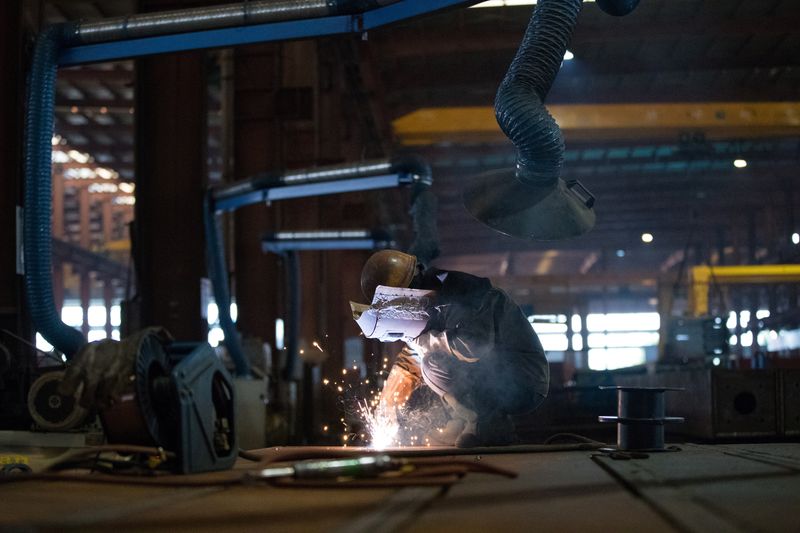China’s factory activity contracts for first time in 9 months, Caixin PMI shows

BEIJING (Reuters) – China’s manufacturing activity in July shrank for the first time in nine months as new orders declined, a private sector survey showed on Thursday, boding ill for the country’s growth momentum in the second half of 2024.
The Caixin/S&P Global manufacturing PMI fell to 49.8 in July from 51.8 the previous month, the lowest reading since October last year and missing analysts’ forecasts of 51.5.
The reading, which mostly covers smaller, export-oriented firms, is in line with an official PMI survey on Wednesday showing manufacturing activity slipped to a five-month low.
According to the Caixin survey, the expansion in manufacturing output was the slowest in nine months, which was attributed to the first fall in new orders in a year.
Participants blamed subdued demand and client budget reductions for the poor performance.
Sub-sector data indicated that the renewed drop in new orders predominantly affected investment and intermediate goods, while the consumer goods sector saw slight expansion in July.
To boost consumption, China announced last week that around 150 billion yuan ($20.74 billion) out of 1 trillion yuan ultra-long special treasury bonds issuance will subsidise replacements of old appliances, cars, electronic bicycles and other goods.
Despite the overall tepid new orders, export orders continued to increase in July, though the rate of growth slowed slightly from June.
“The most prominent issues are still insufficient effective domestic demand and weak market optimism,” said Wang Zhe, economist at Caixin Insight Group, calling for policy efforts to stabilise growth.
The world’s second-largest economy missed growth forecasts in the second quarter and faces deflationary pressures, with retail sales and imports significantly underperforming industrial output and exports.
China’s foreign trade growth in the second half of the year faces numerous obstacles, including high geopolitical risks, supply chain disruptions due to protectionism, shipping congestion and escalating shipping fees, Lv Daliang, customs spokesperson, said on Tuesday.
Purchasing activity declined for the first time since October 2023, leading to a renewed depletion of purchase stocks, the Caixin survey showed.
On the other hand, stocks of finished goods rose again, though this was partially driven by delays in outbound shipments.
Some Chinese manufacturers lowered selling prices to support sales amid increased competition, while input cost inflation eased.
Employment was stable as the rate of job losses was unchanged from June, staying in contractionary territory for 11 months.

Producers remained optimistic about output in the coming year, with the level of optimism improving from June.
($1 = 7.2340 )





